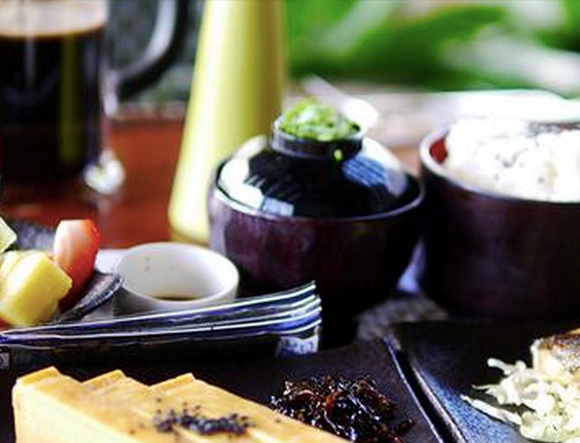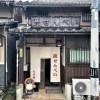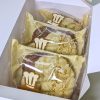
For generations, Disneyland and Hawaii have been two of the most popular destinations for Japanese travelers, so it only makes sense that Disney’s Aulani Resort in Hawaii sees visitors from Japan as a key demographic. But while the main appeal of travel is the opportunity to experience something new, Disney realizes that not everyone rolls out of bed at their most adventurous, and so offers a Japanese breakfast for those wanting to start their day with a taste of home.
It’s a considerate service, and for the most part, the resort’s done a great job. True connoisseurs of Japanese cuisine, however, will probably spot three odd quirks to Disney’s (almost) traditional Japanese breakfast.
Ingredient-wise, there’s not much to grumble about, as the dishes here are a pretty accurate representation of what goes into a Japanese breakfast, unlike the meager and misinformed menu BuzzFeed put together a while back. Grilled fish, omelet -like tamagoyaki eggs, pickles, white rice, and miso soup are all properly accounted for.
But while the food itself will be familiar to Japanese travelers, the presentation is not. Starting with the most subtle mistake, table-setting conventions dictate that the miso soup (seen with the bowl still covered) should be placed to the right of the rice bowl, not to the left as in the picture tweeted by the Disney Aulani resort.
▼ Disney
▼ Ehime Prefecture’s Japanese inn Nagisa
Speaking of miso soup, some people like to add diced green onions, called negi in Japanese, to the broth. Tasty as negi are, though, the flavor, not to mention the smell, tends to stay in your mouth for a long time after the meal is over. As a result, just how much negi to use, if any, is a matter of personal preference, and they’re sometimes served on a small side dish so that each individual diner can season the soup according to their tastes.
We’re not sure if Disney’s chefs were unaware of the practice of using a separate dish or simply were trying to conserve space on the serving tray, but either way, they decided to put the onions in a somewhat less orthodox position.
Putting the negi on top of the lid like that is a bit of a faux pas. Obviously you have to remove the lid to get to the miso soup. The heat of the broth, though, causes condensation to form on the inside of the lid, so in order to keep the table from getting wet, you’re supposed to flip it over before you set it down. We’re assuming the lids are thoroughly washed after every meal, but still, this is a little like presenting a steak on the underside of a plate in that it doesn’t conjure up the cleanest of images.
It’s also going to be pretty hard to get the lid off without spilling negi all over the place.
Finally, there’s the fish. Again, this traditionally gets its own plate in Japan, with maybe a tiny dollop of grated daikon radish lying next to it. Disney, though, has opted to put it on top of a bed of shredded cabbage.
This is actually a pretty common presentation style in Japan. However, we’ve never seen it done with grilled fish before, since it’s the norm for deep-fried food like tonkatsu pork cutlet.
Despite these quibbles, we can’t say we spotted anything that would diminish the flavor of Disney’s breakfast. Steak doesn’t taste any worse if you mistakenly use your salad fork, beer from a coffee cup will get you buzzed just as well as it will from a pint glass, and eating a pie with your bare hands won’t do anything to detract from your enjoyment (actually, it’ll probably enhance it). Authenticity in appearance aside, it’s nice to know Disney gives Japanese travelers the option to ease into their stay in another culture, not to mention provide American guests with a chance to experience a little internationalism of their own.
Source: Twitter
Top image: Twitter
Insert images: RocketNews24
[ Read in Japanese ]




 Tokyo bento shop giving away 2,205 pounds of free food to help negi farmers
Tokyo bento shop giving away 2,205 pounds of free food to help negi farmers Around Japan in 47 rice balls: Mr. Sato buys each prefecture’s musubi all from one Tokyo shop
Around Japan in 47 rice balls: Mr. Sato buys each prefecture’s musubi all from one Tokyo shop Yaizu: Japan’s best sushi market destination even most foodies in Japan have never heard of
Yaizu: Japan’s best sushi market destination even most foodies in Japan have never heard of We eat a luxurious Japanese-style buffet breakfast in a restaurant full of wood-carved bears
We eat a luxurious Japanese-style buffet breakfast in a restaurant full of wood-carved bears Breakfast for a buck! Tokyo university offering ridiculously cheap, mouth-watering morning meals
Breakfast for a buck! Tokyo university offering ridiculously cheap, mouth-watering morning meals How to order snacks on a Shinkansen bullet train in Japan
How to order snacks on a Shinkansen bullet train in Japan Japan’s new difficult-to-drink-from beer glass protects your liver, but it’s a brutal experience
Japan’s new difficult-to-drink-from beer glass protects your liver, but it’s a brutal experience Burger King Japan suddenly adds Dr. Pepper and Dr. Pepper floats to its menu nationwide
Burger King Japan suddenly adds Dr. Pepper and Dr. Pepper floats to its menu nationwide Demon Slayer: Kimetsu no Yaiba gets new roller coaster attractions and food at Universal Studios Japan
Demon Slayer: Kimetsu no Yaiba gets new roller coaster attractions and food at Universal Studios Japan Hello, cosmetics! Clinique teams up with Hello Kitty this summer for first-time collaboration
Hello, cosmetics! Clinique teams up with Hello Kitty this summer for first-time collaboration Kyoto Tower mascot termination reveals dark side behind cute Japanese characters
Kyoto Tower mascot termination reveals dark side behind cute Japanese characters Nintendo history you can feel – Super NES, N64, and GameCube controllers become capsule toys
Nintendo history you can feel – Super NES, N64, and GameCube controllers become capsule toys This Nara workshop has been making deer crackers for more than 100 years and offers tours【Photos】
This Nara workshop has been making deer crackers for more than 100 years and offers tours【Photos】 High-fashion Totoro cuddle purse is like an elegant stroll in the forest【Photos】
High-fashion Totoro cuddle purse is like an elegant stroll in the forest【Photos】 Legendary Melon Bread by Tokyo Banana returns after 20-year absence【Taste Test】
Legendary Melon Bread by Tokyo Banana returns after 20-year absence【Taste Test】 “The most Delicious Cup Noodle in history” – Japan’s French Cup Noodle wins our heart【Taste test】
“The most Delicious Cup Noodle in history” – Japan’s French Cup Noodle wins our heart【Taste test】 Starbucks releases a cute Frappuccino and Unicorn Cake…but not in Japan
Starbucks releases a cute Frappuccino and Unicorn Cake…but not in Japan McDonald’s Japan’s Soft Twist Tower: A phantom ice cream only sold at select branches
McDonald’s Japan’s Soft Twist Tower: A phantom ice cream only sold at select branches Yabai Ramen: What makes this Japanese ramen so dangerous?
Yabai Ramen: What makes this Japanese ramen so dangerous? Finally! Nintendo Japan expands Switch 8-bit controller sales to everybody, Online member or not
Finally! Nintendo Japan expands Switch 8-bit controller sales to everybody, Online member or not Japanese government wants to build luxury resorts in all national parks for foreign tourists
Japanese government wants to build luxury resorts in all national parks for foreign tourists To combat declining birth rate, Japan to begin offering “Breeding Visas” to foreigners
To combat declining birth rate, Japan to begin offering “Breeding Visas” to foreigners 10 things you should buy at 7-Eleven in Japan
10 things you should buy at 7-Eleven in Japan Studio Ghibli releases anime heroine cosplay dresses that are super comfy to wear
Studio Ghibli releases anime heroine cosplay dresses that are super comfy to wear Woman charged for driving suitcase without a license in Osaka
Woman charged for driving suitcase without a license in Osaka Studio Ghibli unveils My Neighbour Totoro miniature house model
Studio Ghibli unveils My Neighbour Totoro miniature house model Kyoto experiencing problems with foreign tourists not paying for bus fares, but not on purpose
Kyoto experiencing problems with foreign tourists not paying for bus fares, but not on purpose Fighting mild hunger with a Japanese soda that turns into jelly in the stomach【Taste test】
Fighting mild hunger with a Japanese soda that turns into jelly in the stomach【Taste test】 Studio Ghibli’s Howl’s Moving Castle tapestry unveiled in Japan for first time
Studio Ghibli’s Howl’s Moving Castle tapestry unveiled in Japan for first time McDonald’s new Happy Meals offer up cute and practical Sanrio lifestyle goods
McDonald’s new Happy Meals offer up cute and practical Sanrio lifestyle goods Sales of Japan’s most convenient train ticket/shopping payment cards suspended indefinitely
Sales of Japan’s most convenient train ticket/shopping payment cards suspended indefinitely Sold-out Studio Ghibli desktop humidifiers are back so Totoro can help you through the dry season
Sold-out Studio Ghibli desktop humidifiers are back so Totoro can help you through the dry season Japanese government to make first change to romanization spelling rules since the 1950s
Japanese government to make first change to romanization spelling rules since the 1950s Foreigner’s request for help in Tokyo makes us sad for the state of society
Foreigner’s request for help in Tokyo makes us sad for the state of society Ghibli founders Toshio Suzuki and Hayao Miyazaki contribute to Japanese whisky Totoro label design
Ghibli founders Toshio Suzuki and Hayao Miyazaki contribute to Japanese whisky Totoro label design Doraemon found buried at sea as scene from 1993 anime becomes real life【Photos】
Doraemon found buried at sea as scene from 1993 anime becomes real life【Photos】 Tokyo’s most famous Starbucks is closed
Tokyo’s most famous Starbucks is closed Princesses, fruits, and blacksmiths: Study reveals the 30 most unusual family names in Japan
Princesses, fruits, and blacksmiths: Study reveals the 30 most unusual family names in Japan What is Japan’s “blue Hawaii” shaved ice, the flavor everyone knows but can’t describe?
What is Japan’s “blue Hawaii” shaved ice, the flavor everyone knows but can’t describe? Sushi for breakfast? Our under-1,000-yen breakfast with Hama Sushi’s new morning menu
Sushi for breakfast? Our under-1,000-yen breakfast with Hama Sushi’s new morning menu Miso soup capsule toys look good enough to eat, come with recipes to make the real thing!【Photos】
Miso soup capsule toys look good enough to eat, come with recipes to make the real thing!【Photos】 Hungry for love – 10 dishes Japanese men want their girlfriends to cook for them
Hungry for love – 10 dishes Japanese men want their girlfriends to cook for them Bikkuri Donkey isn’t only good for hamburger steaks–their breakfast is bomb too!
Bikkuri Donkey isn’t only good for hamburger steaks–their breakfast is bomb too! Best breakfast ramen in southern Japan? Taste-testing Fukuoka’s super-convenient Morning Ramen
Best breakfast ramen in southern Japan? Taste-testing Fukuoka’s super-convenient Morning Ramen The secret ingredient to miso soup? Rock music!
The secret ingredient to miso soup? Rock music! Poisonous blowfish instant ramen on the way from Cup Noodle’s Nissin
Poisonous blowfish instant ramen on the way from Cup Noodle’s Nissin This “Texas Pile” set lured us into a fried chicken shop for the first time, and we have no regrets
This “Texas Pile” set lured us into a fried chicken shop for the first time, and we have no regrets Pizza Hut Japan’s Thick-style Ramen Pizza is here, but is it as delicious as it is weird?【Taste test】
Pizza Hut Japan’s Thick-style Ramen Pizza is here, but is it as delicious as it is weird?【Taste test】 Can we replace tofu with cheese in miso soup? We find out【SoraKitchen】
Can we replace tofu with cheese in miso soup? We find out【SoraKitchen】 Kyoto’s awesome fire ramen: A one-of-a-kind dining experience our reporter Mai just tried【Video】
Kyoto’s awesome fire ramen: A one-of-a-kind dining experience our reporter Mai just tried【Video】 Which Japanese convenience store has the best miso vegetable stick pack?【Taste test】
Which Japanese convenience store has the best miso vegetable stick pack?【Taste test】 NASA’s new leek-like supersonic jet design would be perfect for Hatsune Miku’s personal plane
NASA’s new leek-like supersonic jet design would be perfect for Hatsune Miku’s personal plane What’s really for breakfast? 20 Japanese people give us a peek at their morning meal【Photos】
What’s really for breakfast? 20 Japanese people give us a peek at their morning meal【Photos】
Leave a Reply